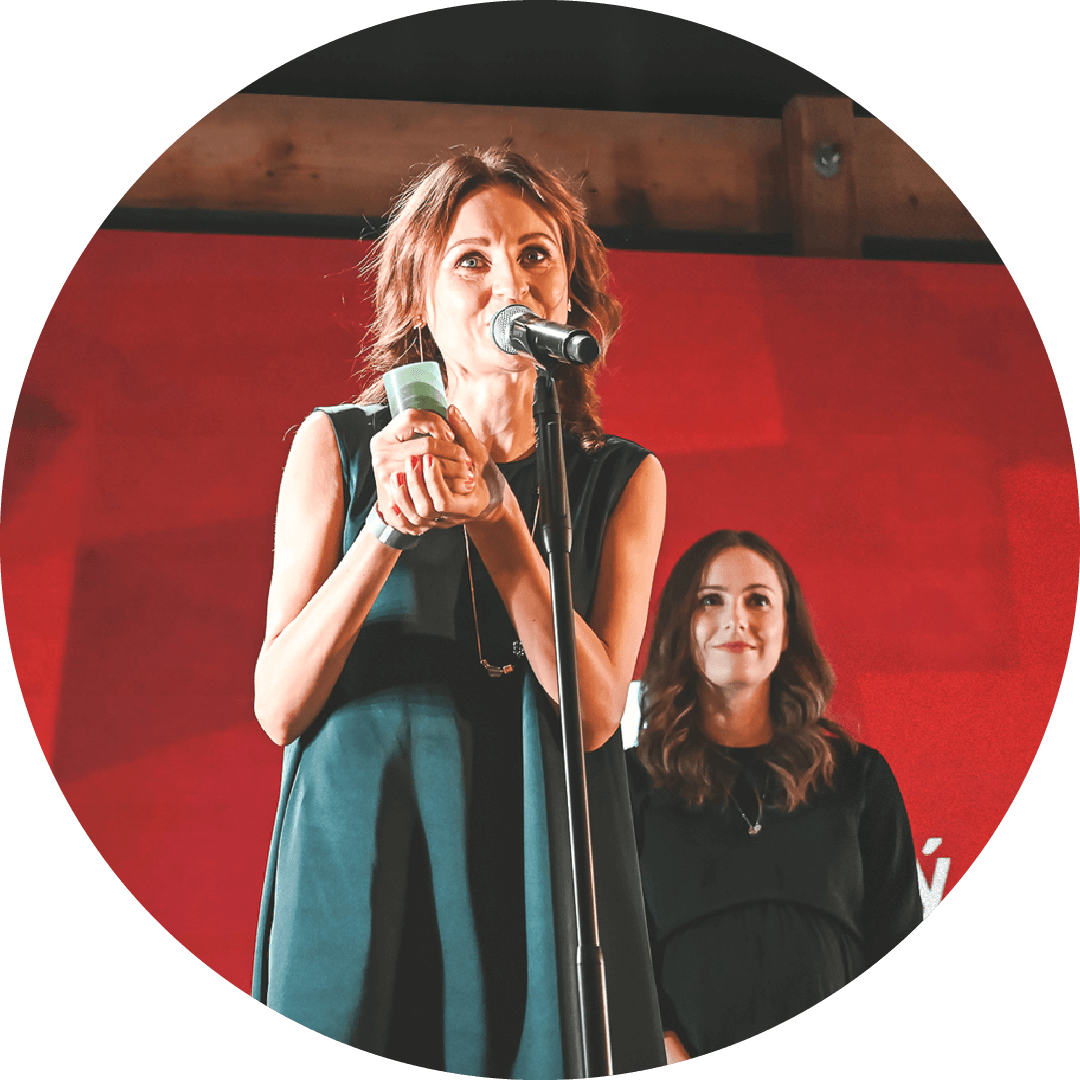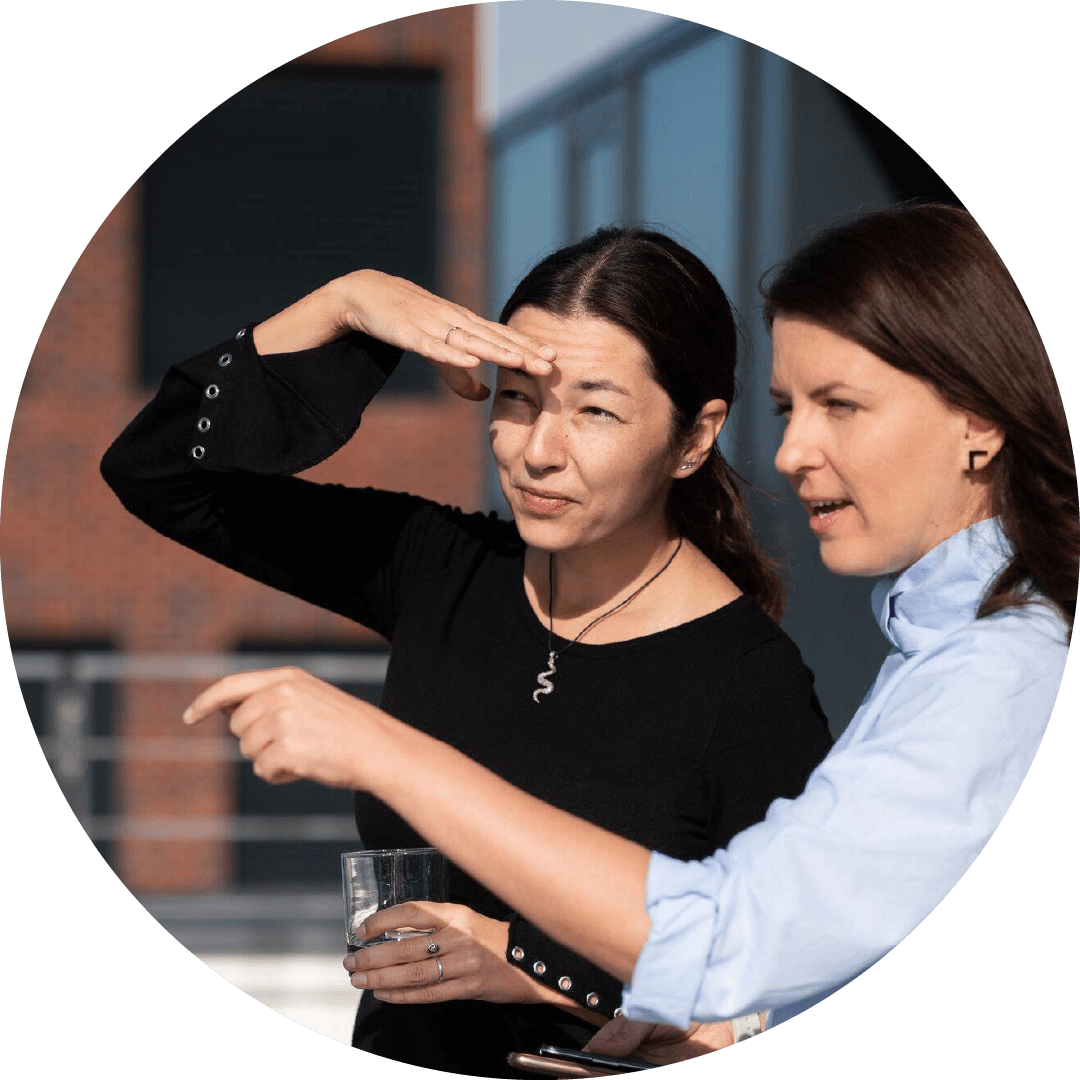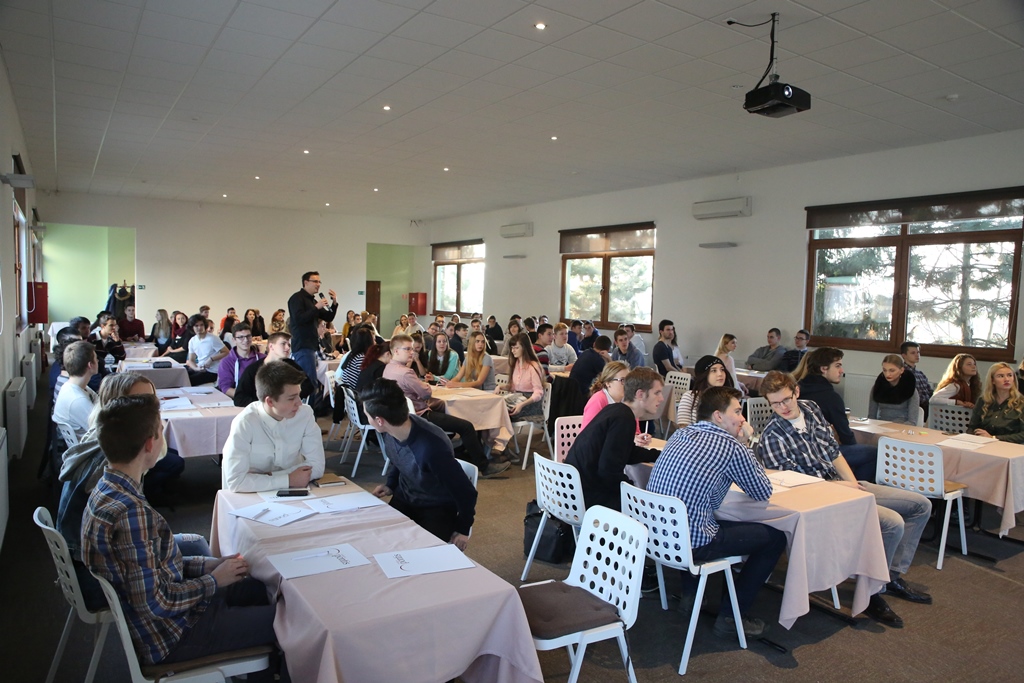„We want teenagers to realize they have several career choices and opportunities.”
We interviewed Juraj Kováč, lecturer of the iNOVEum program, introduced by Embraco in cooperation with the Pontis Foundation.
Kováč is behind an initiative “Rozbehni sa!” that helps to discover promising business ideas. He’s been working with high-school students since 2006 and says, that students have fixed ideas about their future and if they fail to get a job, they feel victimized by the system. Kováč himself fights this approach by teaching entrepreneurship to students. He also cooperates with Embraco Endowment Fund at the Pontis Foundation and launches a new program in Spišská Nová Ves intended for future entrepreneurs.
You’ve introduced a program for high-school students in the Spiš region that promises to introduce them to a real business world. Could you tell us more?
The program is called iNOVEum and it aims to teach basics of business and start-up knowledge to young people, students of secondary schools in Spišská Nová Ves. In other words, the basics of how to come up with a business idea, how to develop its business model and test it in a small scale.
What are the capabilities of students who successfully finish such program?
Our goal is to show them how to quickly and inexpensively test any business idea before they invest their time and money into it. We want them to be able to notice ideas on an everyday basis. They are given €250 for their business idea, which helps them to pay for the initial expenses and enables them to test the idea itself. I believe that it’s best to learn from your experience.
How are these ideas born? What motivates the students to come up with effective solutions?
Business ideas are created because students are taught how to effectively notice problems, issues and obstacles of everyday life and turn their solutions into business opportunities. In fact, it’s great if something complicates their lives because they can create a service or a product that solves this problem. We also want them to notice the problems of others. For example, one student would like to solve a problem of his father, who is a diver. While he enjoys his favorite activity he wears a wetsuit but he is cold and his joints hurt. I also recently met some girls returning from a shopping mall. They had nowhere to put their bags while they were shopping, which they didn’t like. We teach them how to look for business opportunities by solving such simple things.
Surely not everyone is creative and comes up with an idea. Also not everyone is capable of actualizing the idea. How do you think a well-composed team should look like?
I agree that there are different kinds of people, but I don’t see it completely in black and white. It’s not like there is a creative person who only proposes new ideas but is incapable of actualizing them, and vice versa. It’s useful when there are at least two people in a team, that way they can help each other, they can cooperate using their skills, or share the same interest in the type of work they enjoy. It’s important that team members are compatible character-wise, and are equally hard-working.
How can such activity influence students’ choice of future occupation and their progress both during and after the studies?
Our objective is to give them some direction. Nowadays, many young people have their mind set on finishing high school, then choosing a university, often not even caring which one. Then they wait for someone to give them a job. If they don’t get employed, they feel like victims of the system. We want to show them that it doesn’t have to be this way. Our goal is to make them think about business plans they would be capable of pursuing and develop their entrepreneurial spirit starting at a young age. We would be glad if they realized that they have several career choices and opportunities.
Could you describe the students which you currently teach your business know-how?
Three or four years ago, start-ups were not that common. Nowadays, pursuing your own business idea is “in style”, so to speak. It’s being popularized by the media and the start-up community progressed a lot in the past few years. The thing which I feel is a problem, but which also motivates me to do what I do, is that people are unable do differentiate between a good idea and a bad one. Sometimes all it takes is a look at your data or doing a bit of googling to find out if similar ideas already exist. We would like the students to do the same, teach them not to invest their time and money into things without a functioning potential.
Is there a difference between students from different regions in which you offer such programs?
I cannot say that there is much difference. Boys, unlike girls, tend to prefer technology-based things, but it’s not that unusual.
Why aren’t schools themselves interested in offering such programs?
Schools often face the most basic problems. They don’t have a sufficient number of students, some even struggle with heating their classrooms. That’s why similar programs are not a priority for them. However, it’s not just about teaching entrepreneurship. We also teach methods of lean start-up. It’s a new and different approach and schools don’t have the necessary know-how. We discuss business of the twenty-first century with our students, and the first phase is not starting a business, but testing if it’s even worth doing.
What should be done to introduce such programs to more schools and finance them independently of companies’ endowment funds?
I work in this field since 2006 and I discovered that the standard education system is complicated and not permissive of this. I don’t think that the current system is compatible with innovative progress. What we teach cannot be taught in a standard way, i.e. we can’t design a course syllabus, test students regularly and grade them in the end. Being part of the iNOVEum program means that students often work on a project in their free time, that’s why the current education system is not compatible. I decided not to wait any longer and I started to teach entrepreneurship this way.
Considering the current education system, are you saying that since there are numerous subjects and syllabi that need to be covered it’s impossible to teach a course in a way that you do it?
It is possible, however the course should be elective and the teacher should be really interested in the subject. However, this can’t be done in all cases. On the other hand, our initiative aims not to integrate the program with the current education system, but to offer it to students in their free time. Those who are interested will seize the opportunity. Frankly speaking, to be able to make it, one has to work very hard.
At Pontis Foundation, we are preparing a recognition program that will award such innovative approaches in education. Do you think that iNOVEum is a scalable project?
Absolutely. It makes good sense to come up with an efficient approach and prepare it for further expansion. Demand has to come from schools which are interested in this program, that’s important. It’s no use trying to persuade them and beg them for a better education for our children.






